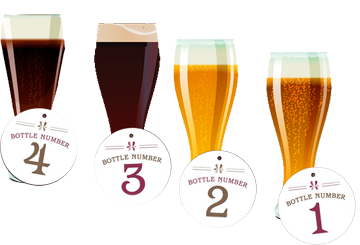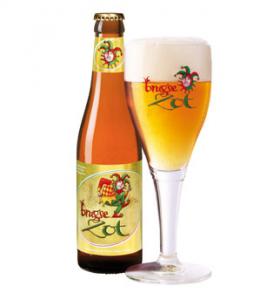Around Beer

Generally you are going to open your beer (of course), pour it in a glass (hopefully), take a brief moment to reflect (maybe?) and then down she goes (definitely). This whole process is fine for your second, third, fourth, fifth and sixth beer of the night, but with your first beer, especially if you are drinking something a little more special than the buck-a-beer lager you found in the fridge, you might want to employ theme steps of beet tasting.
Step 1: Use Your Eyes
Don"t just see your beer – look at your beer. Drinking happens with all the senses, so take some rime to look at that freshly poured glass of beer. Beautiful, isn"t it?
Notice the colour of the beer; different styles of beer can vary tremendously in colour, but this is not to say that a certain colour is indicative of a certain taste. For example, a lager like
Waterloo Dark, brewed in Ontario by the Brick Brewing Company, is as black as cola, but is thin and light with a malty, sweet start and a lightly hopped finish – not at all what you expect from a fitxt glance.
Take note of the clarity of the brew; clarity is important to some styles, like Pilsner (whose trademark is a crisp, golden appearance), while a cloudy drink can also be the sign of a good wheat beer. If a beer isn"t clear, that"s okay. Many beers aren"t made to be dear, and as beer judge Marty Nachel points out, clarity is often the result of modem brewing techniques – in which brewers filter the beer to remove excess yeast-and-nothing more. If you need to drink a clear beer, stick with the Molsom and Labatts of the world. Otherwise, enjoy all the different charities the beer universe bas to offer.
Another thing to look for the size of the head. A good head can tell you a lot about the quality of a beer, or the cleanliness of the glass you"re drinking from. If a beer can"t maintain a head, the beer may be flat, or the glass may have residual oils from its last use that have contributed to the head breaking down. A healthy head should be about two fingers thick, or dose to one inch, with bubbles that are tiny. Ideally, beer should maintain some head down to the last sip.
Step 2: The Swirl
Swirl your beer gently. This will release the important aromatic properties of the beer. Be careful, though. As beer expert Michael Jackson notes, swirling in public has a tendency to look pretentious.
Step 3: Use Your Sniffer
Sniff away. If you don"t want to swirl for fear of rolling eyes, you can instead do some sniffing when you first pour your beer and the aromatics of it are released. Depending on the malt and hops used, you might smell a wide variety of things, from chocolate to citrus to pine needles. Smelling is a vital step of beer tasting, as much of what we taste comes from our sense of smell.
Step 4: Time to Taste
Sip. This isn"t a chugging contest, so take a small, manageable sip that you are able to track as it cascades from the tip to the back of your tongue. Beer has distinct flavours that present themselves at the tip, middle and back of the tongue. Because of these flavours, don"t swallow your sip right away. Instead, swirl it around in your mouth once before swallowing in order to get a well-rounded profile of the beer"s overall taste.
Swirling marries the flavours experienced at the tip and middle of the tongue. Upon swallowing, the back of your tongue experiences the finish, which is often slightly more bitter than the tastes experienced at the middle and the tip. The finish is swallowed shortly by the aftertaste. This entire trip, from tip to aftertaste, forms the taste profile of a beer, and it is often complex.
As a result, it is important to note how the beer tasted at all different regions and points of the sip. While you taste the beet as it swishes around in your mouth, also pay attention to its consistency, which is articulated by a description called "mouth feel". Mouth feel is an important factor in tasting as it helps identify whether the beer has done a good job in representing the family it belongs too. The mouth feel, like the other beer-tasting steps, is a key component in the overall enjoyment of your brew.
Step 5: Make Some Notes
The unofficial fifth step of beet tasting is to reflect on steps one through four. Often we are too consumed with what is going on around us to truly appreciate what it is that we are ingesting. A brief moment to collect your thought on what you just tasted will do wonders fur your beet appreciation and evaluation of future pints.
Following these steps allows you to fully experience your beer and enhance your enjoyment of it. If having multiple, different beers in an evening, conduct steps one to four (and maybe five) with each brew, making sure to drink water or eat plain bread in between samples in order to cleanse the palate. Avoid greasy or salty foods: they distort the taste of beer.
Brugse Zot blond from Brewery De Halve Maan is available in the Beer Store



